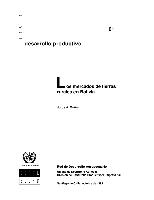Location
As Europe's largest economy and second most populous nation (after Russia), Germany is a key member of the continent's economic, political, and defense organizations. European power struggles immersed Germany in two devastating World Wars in the first half of the 20th century and left the country occupied by the victorious Allied powers of the US, UK, France, and the Soviet Union in 1945. With the advent of the Cold War, two German states were formed in 1949: the western Federal Republic of Germany (FRG) and the eastern German Democratic Republic (GDR). The democratic FRG embedded itself in key western economic and security organizations, the EC, which became the EU, and NATO, while the communist GDR was on the front line of the Soviet-led Warsaw Pact. The decline of the USSR and the end of the Cold War allowed for German unification in 1990. Since then, Germany has expended considerable funds to bring eastern productivity and wages up to western standards. In January 1999, Germany and 10 other EU countries introduced a common European exchange currency, the euro.
The Federal Republic of Germany is a federal parliamentary republic.
Source: CIA World Factbook
Members:
Resources
Displaying 31 - 35 of 49El mercado de tierras rurales en El Salvador
Proyecto Opciones de Políticas para el Fomento del Desarrollo de Mercados de Tierras Agrícolas, con el Fin de Facilitar la Transferencia de Tierras a Pequeños Agricultores
Los mercados de tierras rurales en Bolivia
Resumen
La Ley de 1996 crea la Comisión Agraria Nacional, la Superintendencia Agraria y la Judicatura Agraria, establece un proceso obligatorio de saneamiento de la propiedad agraria para regularizar los derechos en un plazo de diez años y ratifica el impuesto a la tierra, vigente desde 1986. Utilizando las 1 500 encuestas en 18 zonas distintas de Bolivia orientadas a obtener información para la Superintendencia sobre precios de las tierras, el documento analiza el mercado de tierras.
El estudio de mercado de tierras: el caso de Guatemala
Proyecto Opciones de Políticas para el Fomento del Desarrollo de Mercados de Tierras Agrícolas, con el Fin de Facilitar la Transferencia de Tierras a Pequeños Agricultores
Derechos de propiedad y pueblos indígenas en Chile
Resumen
Federal Soil Protection Act.
An Act for the protection and restoration of soil from wastes. It consists of 26 articles divided into 5 Parts. Part 1 contains the definition of certain terms such as, for example, "soil", "functions of the soil", "improvement of the soil, etc., as well as its scope of application. Furthermore, the text deals with the following matters: duty to avert damage to the soil, reduction of damage, adding to or removing materials from the soil, duty to take preventive measures, estimates of danger and inquiry orders. Part 4 establishes principles on sound agricultural use of soil.






